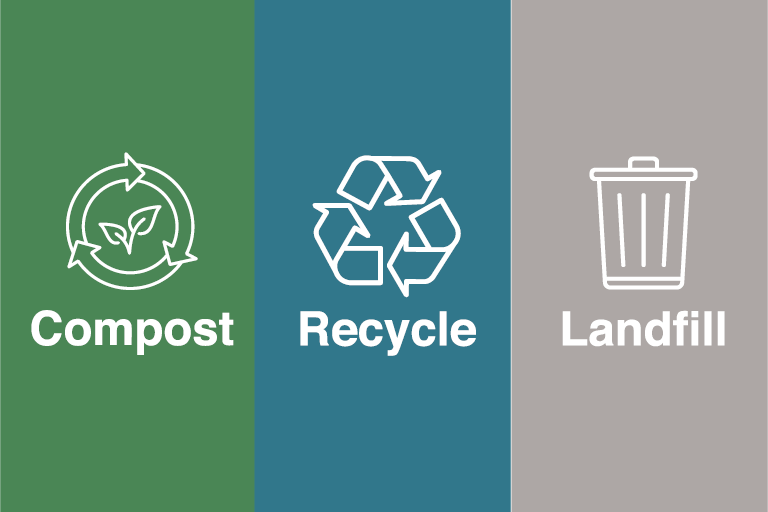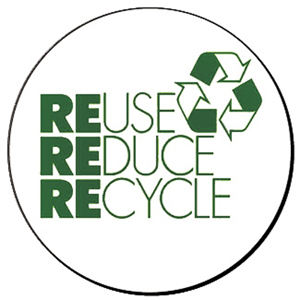The Impact of Recycling Lives Services on Communities and the Setting
The Impact of Recycling Lives Services on Communities and the Setting
Blog Article
Understanding the Classification and Handling of Numerous Kinds Of Waste
Efficient waste monitoring is critical for ecological sustainability, needing a comprehensive understanding of the classification and handling of different waste types. Family waste, commercial byproducts, dangerous materials, digital refuse, and natural residues each necessitate distinctive procedures to ensure safety and security and reduce environmental damages. Implementing right segregation, treatment, and disposal approaches is vital to reduce negative ecological effects and advertise source preservation. The composting of natural waste contrasts greatly with the intricate treatments required to take care of unsafe substances. This diverse method to lose administration highlights its complexity and the vital need for specialized knowledge in this domain.

House Waste
Home waste, incorporating a broad variety of discarded materials created from daily living tasks, stands for a considerable part of the overall waste stream - recycling lives services. This group includes organic waste such as food scraps, lawn clippings, and paper products, together with not natural materials like plastics, metals, and glass. The varied nature of household waste requires efficient category and management to alleviate ecological influence and promote sustainable living techniques
Reliable home waste management starts with segregation at the resource, promoting recycling, composting, and risk-free disposal. Organic waste, as an example, can be composted to generate nutrient-rich soil amendments, reducing land fill problem and enhancing dirt health. Recyclable products, consisting of paper, glass, and certain plastics, can be refined and repurposed, lowering and saving sources energy intake connected with brand-new material manufacturing.
Additionally, dangerous household waste such as batteries, digital devices, and cleaning chemicals calls for specialized dealing with to prevent dirt and water contamination. Public understanding projects and convenient disposal choices play essential functions in ensuring appropriate disposal and recycling of these products. By implementing robust waste decrease approaches and fostering neighborhood engagement, municipalities can significantly relieve the environmental footprint of family waste.
Hazardous Waste
Industrial waste, a major contributor to international waste generation, encompasses a diverse series of products produced by manufacturing, building, and various other industrial tasks. This group includes spin-offs such as scrap steel, plastics, rubber, chemicals, and various other residues. The structure and quantity of hazardous waste can differ significantly depending upon the sector and manufacturing procedures entailed. Efficient monitoring of hazardous waste is important for decreasing ecological effect and advertising sustainable methods.
The handling of commercial waste typically includes several procedures: collection, treatment, segregation, and disposal. Collection systems are developed to effectively collect waste materials from various sources within an industrial operation.
Adopting approaches such as waste minimization, source recovery, and recycling can dramatically minimize the burden of industrial waste on the atmosphere, contributing to even more sustainable industrial methods.
Contaminated Materials

The category of contaminated materials is typically based on its physical and chemical features. Hazardous wastes consist of harmful click to read compounds that can cause negative health effects even at low focus. Destructive wastes can harm or damage living products and tissues. Combustible wastes can quickly fire up, positioning fire hazards, while responsive wastes can trigger surges or launch harmful gases upon call with various other substances.
Efficient contaminated materials monitoring involves numerous essential techniques: recognition and segregation of hazardous products, risk-free transportation and storage space, and ideal therapy and disposal. Therapy methods might consist of chemical stablizing, neutralization, and incineration. Regulatory conformity is important, directed by structures such as the Source Preservation and Recuperation Act (RCRA) in the United States, which guarantees safe and ecologically sound management of dangerous waste.
Digital Waste
Electronic waste, typically abbreviated as e-waste, stands for an expanding obstacle in waste administration due to the fast obsolescence of innovation. This category includes a broad series of thrown out digital gadgets, consisting of smart devices, computers, televisions, and family home appliances. The intricacy of e-waste exists in its composition; these items include a blend of beneficial materials such as gold and copper, as well as dangerous materials like cadmium, lead, and view it mercury.

Regulation and policies, such as the European Union's Waste Digital and electric Devices (WEEE) Instruction, goal to promote liable e-waste administration. These plans mandate makers to help with the collection and recycling of digital products, thereby minimizing the concern on land fills and reducing ecological contamination.
Organic Waste
Organic waste, encompassing eco-friendly materials such as food scraps, lawn trimmings, and agricultural deposits, comprises a substantial part of the metropolitan strong waste stream. This sort of waste is notable not only for its quantity but likewise for its possible environmental effect otherwise handled appropriately. Organic waste can decompose anaerobically in garbage dumps, generating methane, a potent greenhouse gas contributing to environment adjustment.
Proper handling of organic waste includes numerous strategies. In addition, drawing away food waste from landfills through donation programs can minimize food instability while lessening waste.
Municipalities and companies are significantly acknowledging the importance of organic waste management. Applying comprehensive organic waste reusing programs not only minimizes environmental influences but additionally straightens with more comprehensive sustainability objectives, promoting a circular economic climate where resources are continuously reused and repurposed.
Verdict
Reliable waste monitoring and ecological defense require an extensive understanding of the classification and handling of various waste types. Applying suitable methods for each waste type makes certain liable and safe waste administration techniques, ultimately contributing to the defense of ecosystems and public health and wellness.
Reliable waste management is critical for ecological sustainability, calling for an extensive understanding of the classification and handling of numerous waste kinds.Household waste, including a broad variety of thrown out materials generated from everyday living tasks, stands for a significant look at this website component of the general waste stream.Industrial waste, a significant factor to international waste generation, encompasses a diverse range of materials produced by manufacturing, construction, and other industrial activities (recycling lives services).Harmful waste, a crucial issue in waste administration, makes up materials that present considerable dangers to human health and wellness and the atmosphere due to their hazardous, destructive, flammable, or reactive properties.Organic waste, encompassing eco-friendly products such as food scraps, backyard trimmings, and farming deposits, makes up a considerable part of the local strong waste stream
Report this page